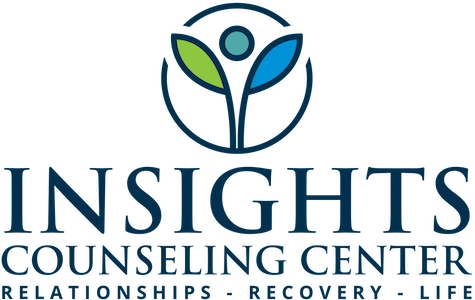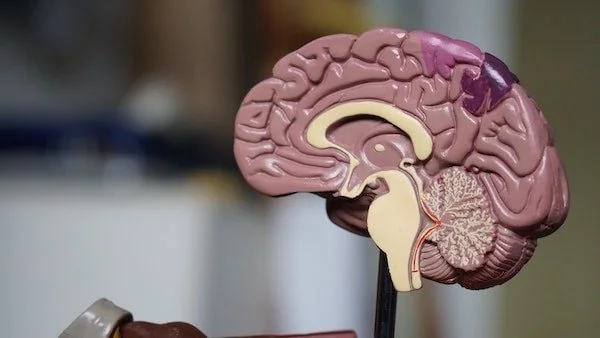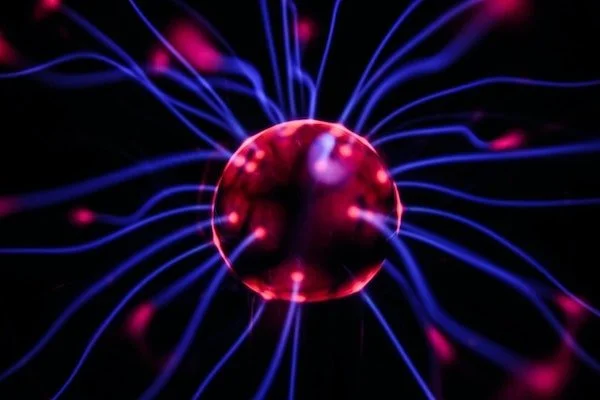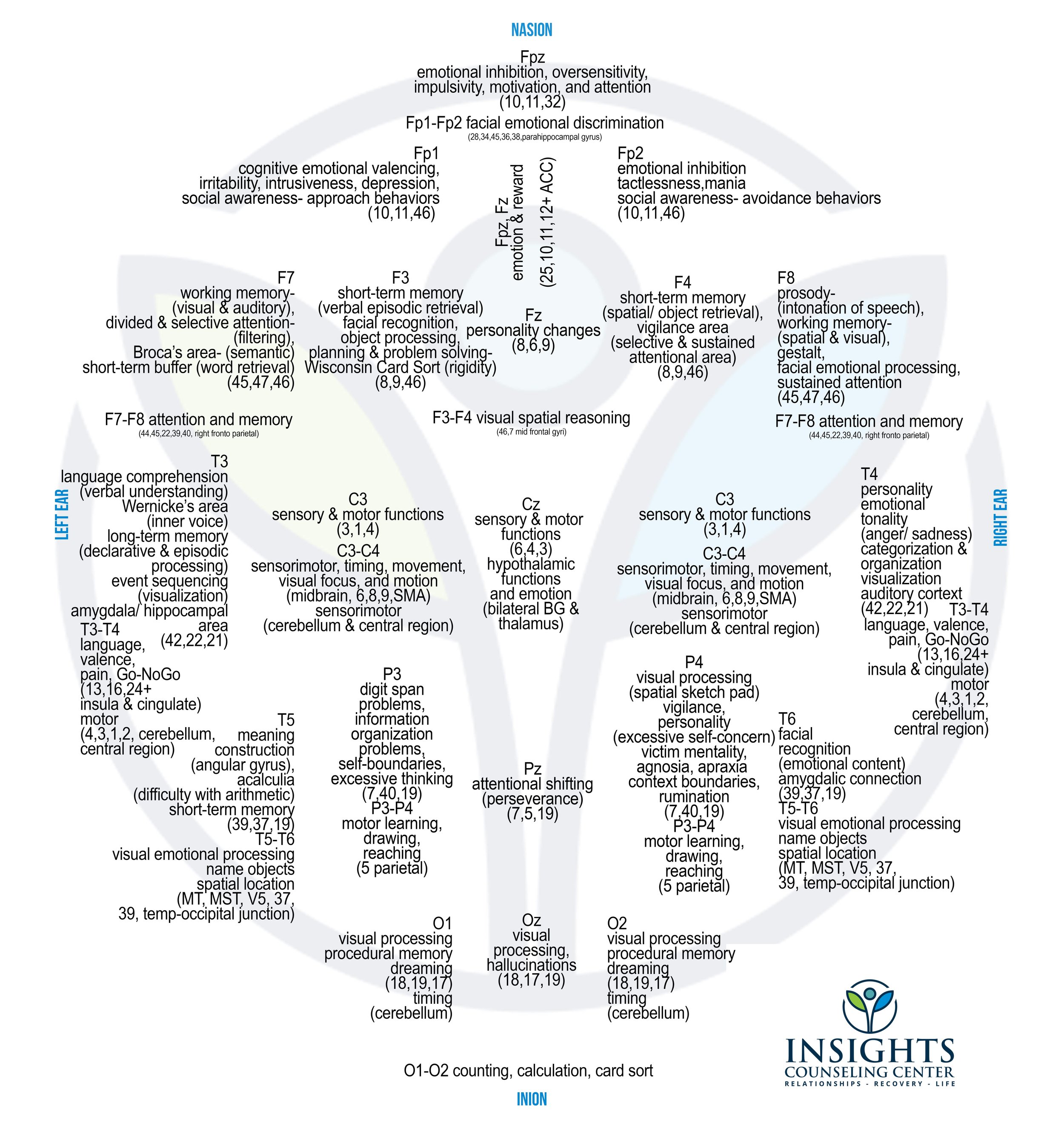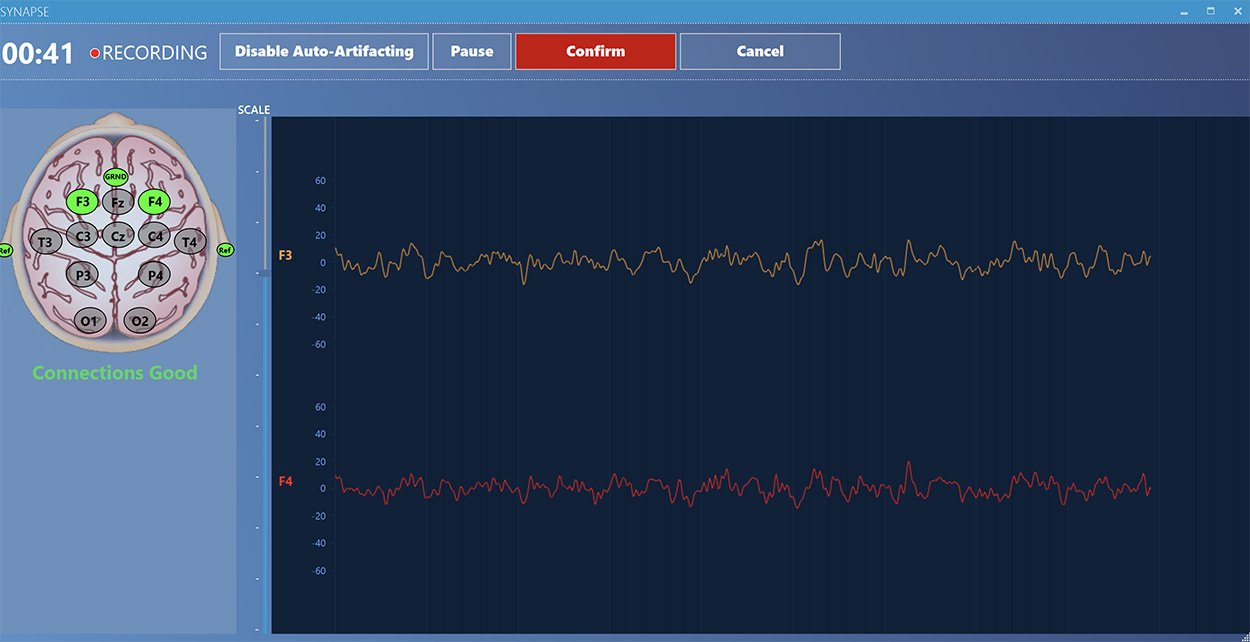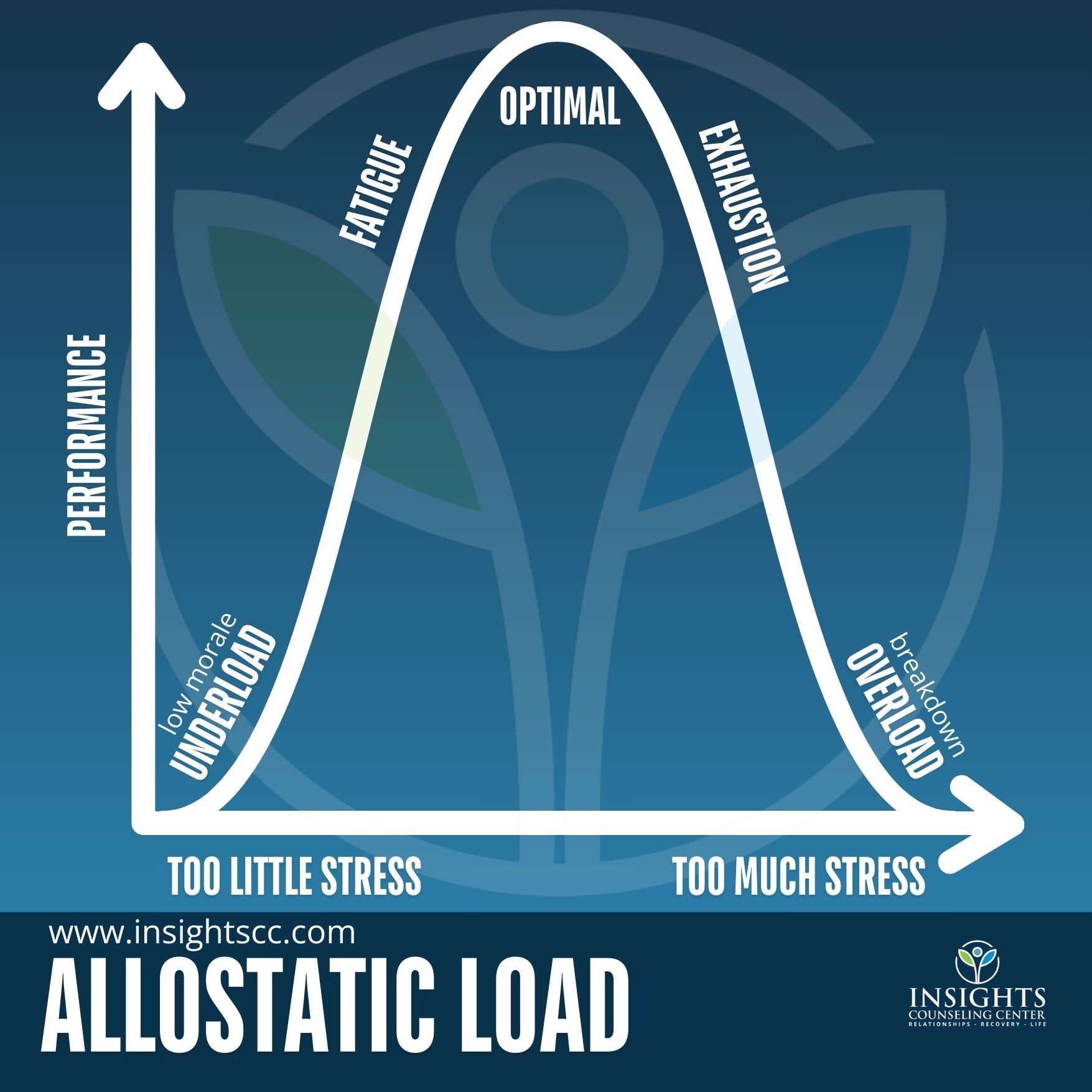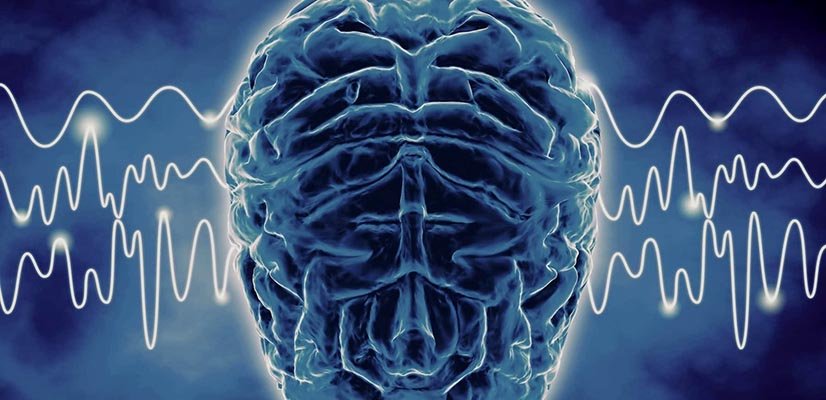
Neurofeedback Therapy
What is Neurofeedback Therapy?
Neurofeedback therapy is exercise for the brain! Neurofeedback, also called EEG Biofeedback is a state-of-the-art, non-invasive, drugless method for teaching the brain to function in a more balanced and healthful way. A simple and pleasant learning modality that can help shift the way the brain produces and distributes its electrical energy. Four divisions of electrical impulses made by our brain, Delta, Theta, Alpha and Beta are called “Frequency Bands.” These Frequency Bands tell us which parts of your brain are active and which frequency bands the brain should be using to complete a given task, activity or should be most active during different states of mind.
How Effective Is Neurofeedback Therapy?
Neurofeedback therapy was developed in the 1960s and has been used with patients dealing with a wide range of mental health issues for several decades.
Studies have shown that neurofeedback therapy is a safe and broadly effective treatment for children, teenagers, and adults. In a randomized control trial with adolescents who had endured developmental trauma, including exposure to violence, addiction, abuse, and other adverse childhood experiences, researchers found that the use of neurofeedback therapy had a significant positive impact. ¹ Compared to the control group, participants in the treatment group demonstrated an eleven times greater improvement in self-control and better emotional regulation capabilities after completing the neurofeedback protocol. Neurofeedback therapy can help people of all ages improve their quality of life.
Have Any Questions? Send Us A Message!
How Does Neurofeedback Treatment Work?
A healthy and regulated brain is able to shift between processing speeds as demands arise. Brainwaves that are overactive or underactive can impact an individual's overall health and wellbeing.
There are four brainwaves we monitor when doing neurofeedback. Slow processing consists of Delta and Theta waves. Delta waves are produced during deep dreamless sleep, and Theta waves are produced when we are in deep relaxation or a twilight state. Idle processing is associated with Alpha waves and a state of quiet wakefulness or a state of meditation. Fast processing is represented in Beta waves, and these are used when an individual is externally focused.
Beta waves are vital to completing day-to-day tasks and engaging in daily life, and Delta waves are important for winding down at the end of the day to shift towards sleep. The goal of neurofeedback is to allow the brain to learn to self-regulate and shift seamlessly between the states of arousal and relaxation.
This form of neurofeedback is an innovative drug-free alternative. Treatment protocols are individualized by doing a qEEG brainmap. To train, the client is fitted with sensors that read and monitor the electrical impulses within the brain. When brainwaves are optimal, the client has a real-time reward by seeing the show they are watching in full brightness and volume. When brainwaves are dysregulated, the picture and sound dim. The moment the brainwaves regulate again, the brightness and volume return. This process allows the brain to learn from itself and in turn how to better self-regulate.
We offer both in-office and home treatment options to our clients. Using a home neurofeedback system is a convenient option for people seeking treatment with their whole family. A home system makes treatment accessible for those who cannot easily attend sessions in a therapist’s office.
Who Can Benefit From Neurofeedback Therapy?
Neurofeedback is often used for people suffering from trauma, addiction, anxiety, or depression. People who have been diagnosed with conditions such as ADHD, autism, or learning disorders can also improve their brainwave functioning with neurofeedback therapy. Additionally, neurofeedback can be used as part of the treatment protocol for certain physical health issues, like migraines or insomnia. Those suffering from memory loss can also turn to neurofeedback therapy to boost their cognitive functioning.
Furthermore, people who want to excel in academics, sports, or other physical or intellectual pursuits can benefit from neurofeedback therapy for peak performance. Gaining mastery over self-regulation can help individuals reach their full potential.
Many people who have seen little to no improvement with medication may find relief through neurofeedback sessions. There are no side effects with this non-invasive approach to treatment. And rather than merely treating the symptoms, neurofeedback teaches clients to self-regulate through operant conditioning.
Resources
Recent Posts
Our Background in Neurofeedback Therapy
Tal and Teresa completed Advanced Certification in QEEG and Neurofeedback and became a BrainCore Authorized Provider in July of 2021. Teresa became BCIA Board Certified and received the Biofeedback Certification in Neurofeedback (BCN) through the Biofeedback Certification International Alliance (BCIA) in 2022. Tal will complete this additional certification in early 2023.
Why We Started Using Neurofeedback Therapy
Tal initially learned about neurofeedback treatment during a series of retreats led by Dr. Pat Carnes. His passion and knowledge base grew greatly under Dr. Carnes, and Tal has a passion to bring the latest in neuroscience to bear to improve mental health.
Tal and Teresa invested in home neurofeedback training for their family as they believe in using treatment interventions that they have used themselves. They were so encouraged by the results that they pursued certification and now provide it for the entire team here at Insights Counseling Center.
Neurofeedback sessions have led to positive results for our clients struggling with addiction and complex trauma, which can go hand-in-hand. As we often work with clients who want to heal from sex addiction and partner betrayal, this form of therapy can be an integral part of treatment.
Some of our clients do not even realize they were living with persistent anxiety until trying neurofeedback treatment and gaining a newfound sense of calm and contentment. While everyone’s healing timeline is personal, clients generally feel more relaxed and less reactive within 8 to 12 neurofeedback sessions. This approach to therapy can lead to truly transformative improvements in our clients’ mental and physical health.
We Provide Neurofeedback Therapy in Birmingham & Huntsville
We have our main office in Birmingham and we have expanded to serve clients in North Alabama with BrainCore Neurofeedback of Huntsville!
You Can Learn To Self-Regulate For Lasting Healing
If you are interested in the benefits of neurofeedback therapy, we invite you to email us to schedule a brainmap, or book a free 10-minute consultation call.
